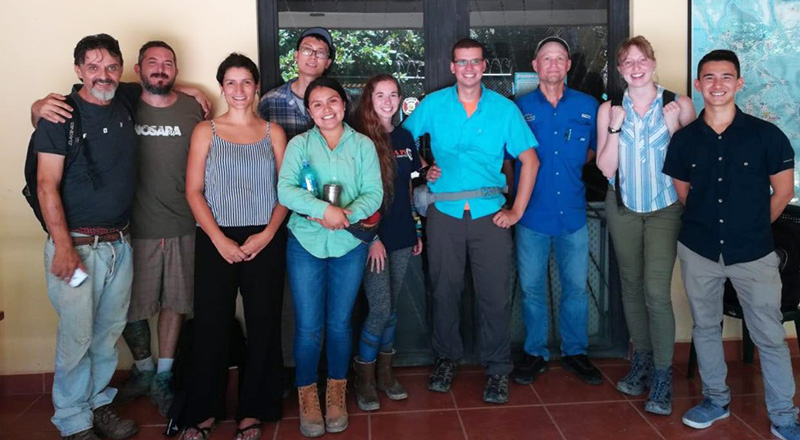Recently, we announced that from the 29th of September to 3rd October, that the NCA invited a team from the University of Florida’s Environmental Science Department to visit Nosara to perform a preliminary investigation into how to safely and cost-effectively close the Nosara dump. The NCA is appreciative of the work from the University of Florida, who came on grant money provided by donors to help environmental engineering students get real-world experience. Without them, the costs for this work would have been prohibitive.
 From left to right: Christoph Hubman, Cristian Zumbado, Kuki Araya, Gary Qiu,Teresa Hernandez, Nicola Steelnack, Daniel Amman,Dr Timothy Townsend. Madelyn Wilson y Francisco Jimenez.
From left to right: Christoph Hubman, Cristian Zumbado, Kuki Araya, Gary Qiu,Teresa Hernandez, Nicola Steelnack, Daniel Amman,Dr Timothy Townsend. Madelyn Wilson y Francisco Jimenez.
The original article can be found here. The article outlined two strategies to close, clear, and begin regenerating the dump.
OPTION 1 – The first option was to cap the waste. Essentially, this meant leaving it where it lay and sealing it with an impermeable layer of clay. This would prevent rainwater seeping in and carrying toxins deeper into the soil. This option would have rendered the site off-limits to the public for at least twenty years.
OPTION 2 – The second option was to excavate the waste and haul it to the Santa Cruz landfill, which has offered to take it. Although this option is not without its drawbacks, it promises a potential space for recreational activities, housing, or conservation. All of these options offer either economic or social benefits to Nosara.
Because the effects the poorly lined waste could have on the groundwater that our district relies on for drinking water, option two was chosen as the best path forward. The NCA will know more once the Municipal regulatory process begins and the full hydrological study is done in the area (as mandated by the regulatory process)
During their visit, the University of Florida Environmental Science Department, Dr. Timothy Townsend plus 5 of his students spent time engaged in a range of activities, including:
- Meeting with the NCA and involved parties to get initial opinions on the site closure
- Tour and meet with staff at Santa Cruz landfill to discuss the feasibility of waste acceptance
- Meeting with transporters to discuss pricing and logistics for hauling waste
- Collecting extensive site data including elevation and GPS coordinates. This data will hopefully allow us to estimate a more precise volume of trash at the dump.
Eventually, it was concluded that option two (excavate the waste and haul it to the Santa Cruz landfill) was the optimal way to proceed.
Team leader Professor Townsend advised that if the trash was very close to the aquifer the capping method would have decreased the chance of toxic seepage by around 90 percent. However, we felt this number was still too risky. Consequently, it was concluded that taking the waste to the Santa Cruz landfill was the most environmentally friendly way to clear the dump and ensure no further contamination. This will also allow for other uses for the land.
The Nosara Civic Association thanks Professor Townsend and his team for their valuable contributions to this project. The NCA agrees with the team’s findings and feels that removing the trash is the best option. Before it makes its decision on how to proceed the NCA is awaiting the final report, due in December. Hopefully, this report will shine a light on the amount of work, and thus funds required to achieve a brighter future for the dump. A committee will be formed to discuss how to move forward and how to raise the funds necessary to begin work. Interested parties are invited to reach out and partake in these discussions with the NCA board of directors.
PLEASE SHARE THIS INFORMATION: This is everyone’s trash, everyone’s problem. If you have an interest in helping or know of an organization that can help, please send an email to info@nca.cr We thank members for their membership and please spread the word on the importance of membership in the NCA.
